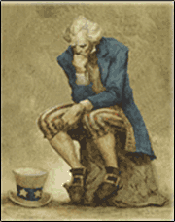
–>
March 9, 2023
For forty-five years (1964 to 2009), the United States experienced significant progress in race relations. Thanks to the efforts of individual citizens in their communities throughout all regions of the country, this nation was well on its way to racial healing. In 2008 only 18% of Americans were greatly concerned or worried about the state of race relations in the country as nearly 70% thought that relations between Whites and Blacks were very or somewhat good.
‘); googletag.cmd.push(function () { googletag.display(‘div-gpt-ad-1609268089992-0’); }); }
In 2009, the most divisive and societally destructive president in American history, Barack Obama, came into office determined to reverse this trend by manipulating the Black citizenry into abandoning racial harmony by utilizing malicious demonization of the White population. He succeeded in fanning the dying embers of racism into a potential national conflagration.
Thanks to Obama and the media’s incessant drumbeat that so-called “white supremacy” is a major threat to minorities, in particular Blacks, a Washington Post poll in May of 2022 revealed that three quarters of Blacks are worried that they or someone they love will be attacked by a white person — while the reality is that Blacks perpetrate the vast majority of interracial crime. And nearly as many, 70 percent, believe that half or more of all White people “hold white supremacist beliefs.”
A Rasmussen poll taken in February of 2023, exposed the inevitable and disturbing reality that only 54% of Blacks think it’s ok to be White. Race based hatred and discrimination now appears to pervade the bulk of the Black population. This same mindset is also pervasive within far too many of the nation’s private and government institutions.
‘); googletag.cmd.push(function () { googletag.display(‘div-gpt-ad-1609270365559-0’); }); }
Scott Adams, the creator of the Dilbert comic strip, commented on the above poll: “If nearly half of Black people are not ok with White people…that’s a hate group.” “I don’t want to have anything to do with them. And I would say based on the current way things are going, the best advice I would give to White people is to get the hell away from Black people.” Those comments elicited fierce accusations of racism and unbridled outrage culminating in the cancellation of the Dilbert comic strip in hundreds of newspapers. In a subsequent tweet, Adams said he was making two points: to “treat everyone as an individual” and to “avoid any group that doesn’t respect you.”
One cannot take issue with Scott Adams as he is pointing out the obvious: race relations have so deteriorated that animosity between the races is on the cusp of degenerating into near irreversible alienation. An outcome that would have been unthinkable to the White and Black activists who sacrificed their lives in the 1960’s Civil Rights Movement.
On July 4,1963, as part of a predominantly white crowd of demonstrators intent on desegregating Gwynn Oak Amusement Park outside of Baltimore, I briefly met Michael Schwerner. In August of that summer, unbeknownst to me until many years later, we were both in attendance at the March on Washington for Jobs and Freedom. Ten months later he was brutally murdered by the Ku Klux Klan in Mississippi along with Andrew Goodman and James Cheney.
Both Schwerner and Goodman were white and among a considerable number of white citizens who gave their lives in order to permanently stamp out institutionalized discrimination and outright segregation. Untold thousands of others joined in protests, demonstrations and voter drives, oftentimes at great financial and personal cost.
In 1960, nearly 89% of the American population was White. The involvement of a significant percentage of the White population was critical to the success of the Civil Rights Movement. Further, the goal of eliminating all vestiges of institutionalized racism would not have been achieved without the acquiescence of the vast majority of the White population.
The desegregation of Knoxville, Tennessee, for example, was accomplished quickly and without vitriol and violence. Per Robert Booker, one of the Black leaders of the movement: “The white community really pitched in. The white community was sympathetic. The white community participated.” In parts of the deep South where violence was a common occurrence, it was the pressure from segments of the White population in those areas that ended segregation.
‘); googletag.cmd.push(function () { googletag.display(‘div-gpt-ad-1609268078422-0’); }); } if (publir_show_ads) { document.write(“
As an incensed participant in the Civil Rights Movement, I can say with certainty that those, Black and White, who made the ultimate sacrifice in the 1960’s would be horrified at the racial exploitation and animosity rampant in today’s United States.
The determination of a significant segment of America’s White population to right wrongs and live by the tenets of the Declaration of Independence, stretches back to the abolition movements of the early nineteenth century. This determination culminated in a devastating and brutal Civil War. A war in which nearly 400,000 White union soldiers died to end slavery (the equivalent of 6 million today).
As for fictitious “white supremacy” and the reality of slavery in what is now the United States, a brief history lesson.
Throughout the south in 1860, upwards of 4-5,000 black families owned slaves and supported the Confederacy. In 1655, Anthony Johnson, a Black man, was the first person, Black or White, to outright own an African slave in the colony of Virginia. Further, Blacks during this period could and did own White indentured servants or de facto slaves.
Nor was the so-called “White race” exempt from slavery in the Americas. During this same period of time, there were untold thousands of Irish slaves in the Americas as the British throughout the seventeenth century sold and transported vast numbers of Irish natives to the plantations in the West Indies and the colony of Virginia. Self-styled modern historians and race provocateurs attempt to diminish this reality by referring to the Irish slaves in the seventeenth century as “indentured servants”, but their situation and conditions meet the modern definition of slavery.
This nation cannot survive if 41 million Americans who identify as Black are coerced into pitting themselves against 235 million Americans who identify as White. Both groups have much in common, but each needs to stop being manipulated. If not, then American society will assuredly descend into violence and chaos.
First, no one who identifies as White should feel guilty about what their ancestors did or didn’t do, as every race or society since the dawn of mankind has mirrored each other in their evolutionary process. The White population must vehemently reject and ostracize those among their number hellbent on fomenting guilt as they are doing so in order to permanently fracture society.
Second, being a descendant of a slave does not qualify one for any special treatment or reparations as virtually every person alive today has an ancestor that was a slave.
Third, and foremost, the Black community must shed the scales from its eyes and cease being gullible pawns and mascots for the race hustlers, social justice warriors, and the Marxists (i.e., Democrats) as the Black population has assented to be viewed by this cabal as nothing more than gullible, ignorant foot soldiers that can be easily exploited.
Graphic credit: Hating Whitey by David Horowitz
<!– if(page_width_onload <= 479) { document.write("
“); googletag.cmd.push(function() { googletag.display(‘div-gpt-ad-1345489840937-4’); }); } –> If you experience technical problems, please write to [email protected]
FOLLOW US ON
<!–
–>
<!– _qoptions={ qacct:”p-9bKF-NgTuSFM6″ }; ![]() –> <!—-> <!– var addthis_share = { email_template: “new_template” } –>
–> <!—-> <!– var addthis_share = { email_template: “new_template” } –>





